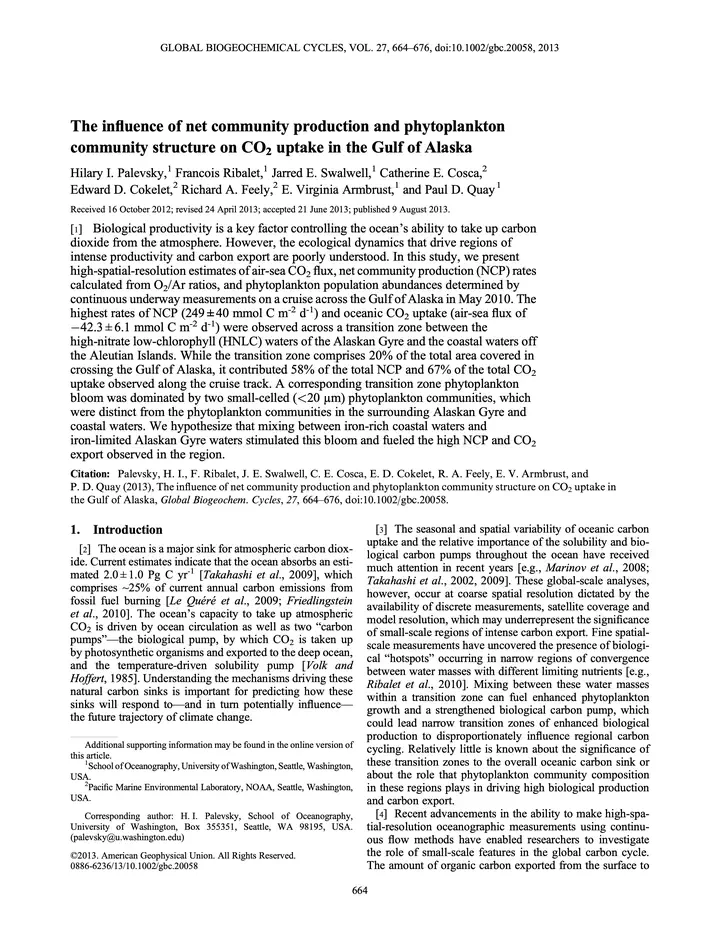The influence of net community production and phytoplankton community structure on CO2 uptake in the Gulf of Alaska

Abstract
Biological productivity is a key factor controlling the ocean’s ability to take up carbon dioxide from the atmosphere. However, the ecological dynamics that drive regions of intense productivity and carbon export are poorly understood. In this study, we present high-spatial-resolution estimates of air-sea CO2 flux, net community production (NCP) rates calculated from O2/Ar ratios, and phytoplankton population abundances determined by continuous underway measurements on a cruise across the Gulf of Alaska in May 2010. The highest rates of NCP (249 ± 40 mmol C m-2 d-1) and oceanic CO2 uptake (air-sea flux of −42.3 ± 6.1 mmol C m-2 d-1) were observed across a transition zone between the high-nitrate low-chlorophyll (HNLC) waters of the Alaskan Gyre and the coastal waters off the Aleutian Islands. While the transition zone comprises 20% of the total area covered in crossing the Gulf of Alaska, it contributed 58% of the total NCP and 67% of the total CO2 uptake observed along the cruise track. A corresponding transition zone phytoplankton bloom was dominated by two small-celled (textless20 µm) phytoplankton communities, which were distinct from the phytoplankton communities in the surrounding Alaskan Gyre and coastal waters. We hypothesize that mixing between iron-rich coastal waters and iron-limited Alaskan Gyre waters stimulated this bloom and fueled the high NCP and CO2 export observed in the region.